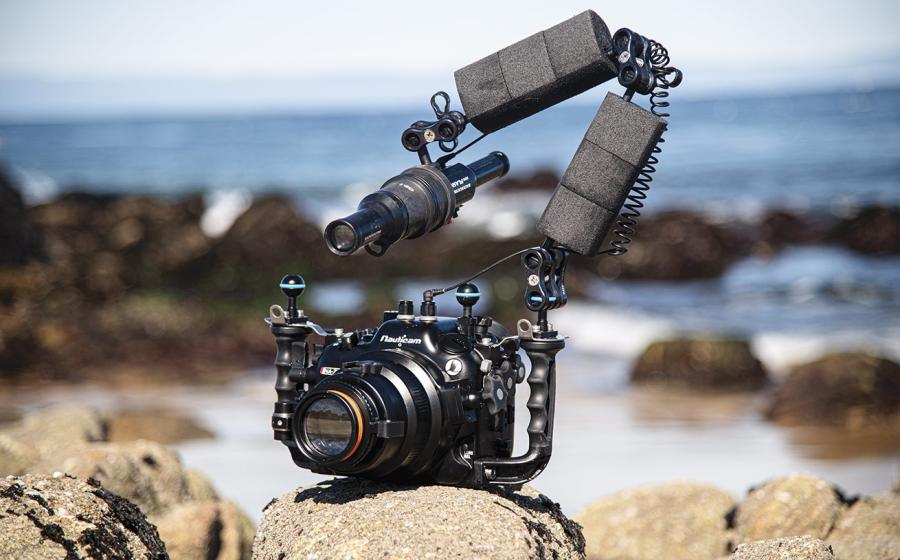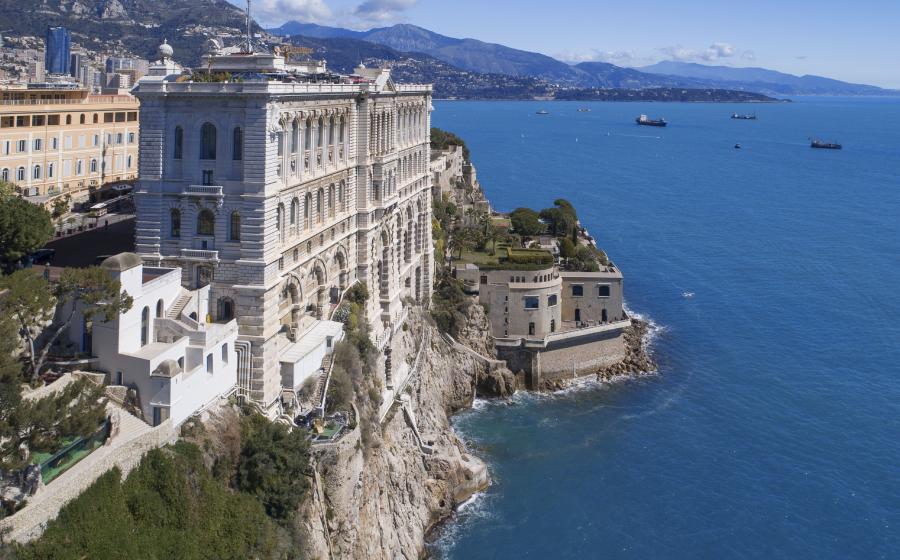Buddy Diving: The Dangers
September 2000
Setting the Stage
Ed.'s note: The incidents described here are real. Names of locations and people have been changed or deleted.
Married couple Frank and Mary were advanced open-water divers who owned their own equipment. A good friend asked if they could help him salvage his snowmobile from a local lake in 90 feet of cold water.
The Dive
The lake offered poor visibility and temperatures below 40F at depth on the day of the salvage operation. Frank and Mary wore wetsuits, single tanks, dependable but not high-performance regulators, and they had no lift bags. Several friends accompanied them in two small boats.
On their third dive to 90 feet, they were able to find and mark the snowmobile. Frank and Mary worked well together, but both were getting cold and tired. Their friends suggested quitting for the day, but Mary pushed to get the job done. They decided to make one more dive to tie a heavier line to the snowmobile so one of the boats could drag it to shallower water.
After switching tanks, they descended together on their fourth dive of the day to 90 feet. Arriving at the snowmobile, Frank dragged some gear out of the way and tied the heavier line to the snowmobile. Mary hovered above him, but did not clearly respond to Frank's hand signals while he was working. Because Frank needed to be negatively buoyant on the bottom to do the work, he had no air in his BC, and he further reduced visibility by stirring up the silt.
As Frank completed tying off the line, he noticed it was getting harder to breathe. His pressure gauge read 800 psi. Looking around, he didn't see Mary. To start his ascent, he pushed his power inflator button to add air to his BC, but was shocked to find that it didn't work because the inflator hose was not connected. Breathing was becoming increasingly difficult and he still couldn't see Mary. Fred ditched his weight belt and made an emergency buoyant ascent to the surface.
Reaching the surface, cold, exhausted and distressed, he told his friends what had happened, as they helped him out of the water and into one of the boats. Mary's bubbles were still floating to the surface in a regular breathing cycle, so they assumed she was on her way up and was making a safety stop. After a few minutes, her bubbles stopped and they knew it was an emergency. None of the friends were divers and there was no extra dive gear, so all they could do was radio to shore to have a 911 call placed to the local rescue divers.
Over two hours later, when the first two rescue divers reached Mary, they found her at 40 feet, with air in her BC, her tank nearly half full, all her gear in place and a light marker line attached to the snowmobile around her tank valve and BC. When they cut the line, she floated to the surface. She was later pronounced dead.
The Investigation and Trial
Mary's family filed a civil suit against Frank, which led to a trial before a judge. During the investigation for the trial, it became clear that:
-
Both divers had knives, but they had not carried them on the dives.
-
They did not have the proper training, experience or equipment for these dives.
-
Given Frank's level of training and experience, it was not reasonable to expect him to reconnect a power inflator or orally inflate a BC under these conditions.
The key legal issue of this case was: What responsibility did Frank owe to Mary as a scuba diving buddy? The court ruled that, as a dive buddy, Frank did have a duty to help Mary and support her to the best of his ability. But he was relieved of that duty when, faced with his own emergency, he made the emergency buoyant ascent. The judge ruled for the defense and there was no award to the plaintiffs.
Lessons For Life
-
For extreme or highly demanding dive activities in cold water, high-performance regulators that are designed or modified for cold water use are needed.
-
Search and recovery, and salvage in cold, deep, turbid water is beyond the scope of the training provided in an advanced open-water course.
-
Underwater work needs to be well planned, and include back-up divers, special equipment such as lift bags, back-up equipment and, in this case, dry suits.
-
Know when to quit. This was a voluntary recreational dive, not a commercial working dive. If you're cold, tired or stressed, the dive should be terminated.
-
If you do not receive a clear response to your hand signals, go to your buddy, regroup and, if necessary, change the plan or end the dive.
-
Check all your gear before every dive. Be particularly careful when you are cold or tired.
-
Learn how to deal with entanglements on your own. If you can't free yourself, ditching your weights and/or your scuba unit and making an emergency buoyant ascent may be your only way out.
September 2000
Setting the Stage
Ed.'s note: The incidents described here are real. Names of locations and people have been changed or deleted.
Married couple Frank and Mary were advanced open-water divers who owned their own equipment. A good friend asked if they could help him salvage his snowmobile from a local lake in 90 feet of cold water.
The Dive
The lake offered poor visibility and temperatures below 40F at depth on the day of the salvage operation. Frank and Mary wore wetsuits, single tanks, dependable but not high-performance regulators, and they had no lift bags. Several friends accompanied them in two small boats.
On their third dive to 90 feet, they were able to find and mark the snowmobile. Frank and Mary worked well together, but both were getting cold and tired. Their friends suggested quitting for the day, but Mary pushed to get the job done. They decided to make one more dive to tie a heavier line to the snowmobile so one of the boats could drag it to shallower water.
After switching tanks, they descended together on their fourth dive of the day to 90 feet. Arriving at the snowmobile, Frank dragged some gear out of the way and tied the heavier line to the snowmobile. Mary hovered above him, but did not clearly respond to Frank's hand signals while he was working. Because Frank needed to be negatively buoyant on the bottom to do the work, he had no air in his BC, and he further reduced visibility by stirring up the silt.
As Frank completed tying off the line, he noticed it was getting harder to breathe. His pressure gauge read 800 psi. Looking around, he didn't see Mary. To start his ascent, he pushed his power inflator button to add air to his BC, but was shocked to find that it didn't work because the inflator hose was not connected. Breathing was becoming increasingly difficult and he still couldn't see Mary. Fred ditched his weight belt and made an emergency buoyant ascent to the surface.
Reaching the surface, cold, exhausted and distressed, he told his friends what had happened, as they helped him out of the water and into one of the boats. Mary's bubbles were still floating to the surface in a regular breathing cycle, so they assumed she was on her way up and was making a safety stop. After a few minutes, her bubbles stopped and they knew it was an emergency. None of the friends were divers and there was no extra dive gear, so all they could do was radio to shore to have a 911 call placed to the local rescue divers.
Over two hours later, when the first two rescue divers reached Mary, they found her at 40 feet, with air in her BC, her tank nearly half full, all her gear in place and a light marker line attached to the snowmobile around her tank valve and BC. When they cut the line, she floated to the surface. She was later pronounced dead.
The Investigation and Trial
Mary's family filed a civil suit against Frank, which led to a trial before a judge. During the investigation for the trial, it became clear that:
Both divers had knives, but they had not carried them on the dives.
They did not have the proper training, experience or equipment for these dives.
Given Frank's level of training and experience, it was not reasonable to expect him to reconnect a power inflator or orally inflate a BC under these conditions.
The key legal issue of this case was: What responsibility did Frank owe to Mary as a scuba diving buddy? The court ruled that, as a dive buddy, Frank did have a duty to help Mary and support her to the best of his ability. But he was relieved of that duty when, faced with his own emergency, he made the emergency buoyant ascent. The judge ruled for the defense and there was no award to the plaintiffs.
Lessons For Life
For extreme or highly demanding dive activities in cold water, high-performance regulators that are designed or modified for cold water use are needed.
Search and recovery, and salvage in cold, deep, turbid water is beyond the scope of the training provided in an advanced open-water course.
Underwater work needs to be well planned, and include back-up divers, special equipment such as lift bags, back-up equipment and, in this case, dry suits.
Know when to quit. This was a voluntary recreational dive, not a commercial working dive. If you're cold, tired or stressed, the dive should be terminated.
If you do not receive a clear response to your hand signals, go to your buddy, regroup and, if necessary, change the plan or end the dive.
Check all your gear before every dive. Be particularly careful when you are cold or tired.
Learn how to deal with entanglements on your own. If you can't free yourself, ditching your weights and/or your scuba unit and making an emergency buoyant ascent may be your only way out.










